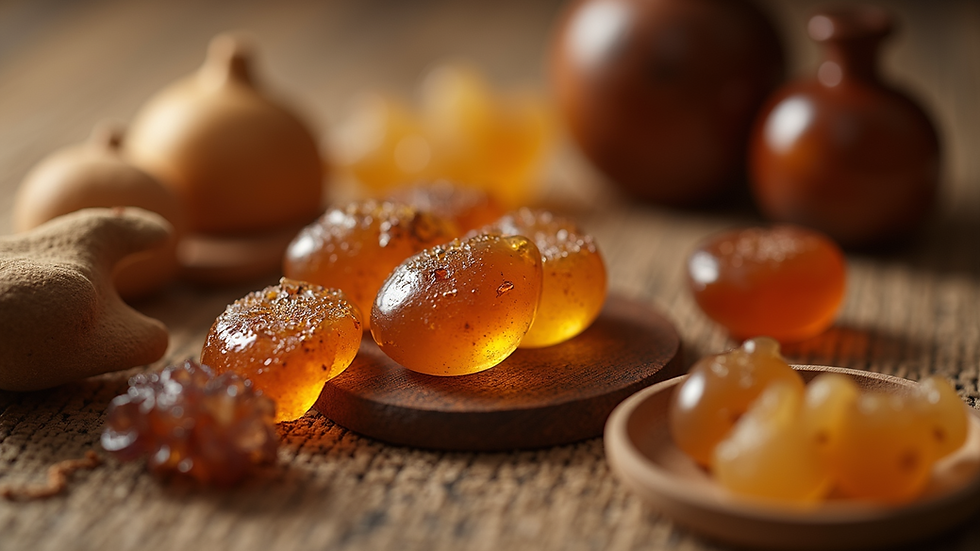Handcrafted Perfumes The Art of African-Arab Ingredients
- fatougoumbala21
- Nov 5
- 4 min read
The world of perfumes is vast and diverse, yet few blends capture the imagination quite like those crafted from African-Arab ingredients. These perfumes tell stories of ancient trade routes, rich cultures, and natural treasures. Handcrafted perfumes made with these ingredients offer a unique sensory experience that connects wearers to a heritage of craftsmanship and nature’s finest offerings.
The Rich Heritage Behind African-Arab Perfumes
Perfume making in African and Arab cultures dates back thousands of years. The Arabian Peninsula was a central hub for the spice and incense trade, while Africa contributed rare resins, flowers, and woods. This history shaped the art of scent blending, where each ingredient was chosen not only for fragrance but also for symbolic meaning and healing properties.
For example, frankincense and myrrh, both native to the Horn of Africa and Arabian regions, were highly prized in ancient rituals and medicine. These ingredients remain staples in many handcrafted perfumes today, valued for their warm, resinous aromas and spiritual significance.
Key Ingredients That Define African-Arab Perfumes
Handcrafted perfumes from this region rely on natural ingredients that are often wild-harvested or sustainably sourced. Here are some of the most iconic components:
Frankincense: A resin with a fresh, citrusy, and slightly spicy scent. It adds depth and longevity to perfumes.
Myrrh: Another resin with a warm, balsamic aroma, often used to balance sweetness.
Oud (Agarwood): One of the most expensive perfume ingredients worldwide, oud has a rich, woody, and smoky scent. It is highly valued in Arab perfumery.
Rose of Taif: Grown in the mountains of Saudi Arabia, this rose variety has a complex, deep floral fragrance.
Sandalwood: Native to East Africa and parts of Arabia, sandalwood offers a creamy, smooth base note.
Ambergris: A rare substance produced in the digestive system of sperm whales, ambergris adds a sweet, musky, and slightly marine nuance.
Spices: Cardamom, saffron, and cinnamon are often included to add warmth and exotic flair.
These ingredients are combined in small batches by skilled artisans who understand how to balance their intensity and character.
The Craftsmanship of Handcrafted Perfumes
Creating a handcrafted perfume is a meticulous process. Unlike mass-produced fragrances, these perfumes are made in limited quantities, often by family-run workshops or individual perfumers. The process involves:
Selecting raw materials: Only the highest quality natural ingredients are chosen.
Extraction: Techniques like steam distillation, enfleurage, or solvent extraction are used to obtain essential oils and absolutes.
Blending: Perfumers carefully mix oils in precise proportions to create harmonious scents.
Maturation: The blend is left to mature for weeks or months, allowing the components to meld.
Bottling: The final product is bottled by hand, often in decorative containers that reflect cultural aesthetics.
This hands-on approach ensures each bottle is unique and rich in character.

Why Choose Handcrafted African-Arab Perfumes?
There are several reasons why these perfumes stand out:
Authenticity: They use natural ingredients sourced from their native regions.
Complexity: The scents evolve over time, revealing different layers.
Cultural connection: Wearing these perfumes connects you to centuries of tradition.
Sustainability: Many producers focus on ethical harvesting and fair trade.
Personal touch: Small batch production means more attention to detail.
For example, a perfume featuring Taif rose and oud can transport the wearer to the mountainous landscapes of Saudi Arabia, while frankincense and myrrh evoke the ancient incense markets of East Africa.
How to Experience and Use These Perfumes
To fully appreciate handcrafted African-Arab perfumes, consider these tips:
Apply to pulse points: Wrists, behind ears, and the neck help diffuse the scent.
Layer scents: Some artisans offer complementary oils or balms to enhance the fragrance.
Store properly: Keep perfumes away from heat and sunlight to preserve their quality.
Try samples first: Because these perfumes are complex, testing helps find the right match.
Many enthusiasts enjoy the ritual of applying these perfumes, which can feel like a moment of mindfulness and connection to nature.
Examples of Notable African-Arab Perfume Brands
Several brands have gained recognition for their dedication to handcrafted African-Arab perfumes:
Amouage: Founded in Oman, known for luxurious blends featuring oud and frankincense.
Maison Francis Kurkdjian: Offers scents inspired by Middle Eastern ingredients.
Nabeel Perfumes: Based in the UAE, focusing on traditional Arabian scents.
Oud Majestic: Specializes in oud-based perfumes with African and Arab influences.
These brands highlight the diversity and richness of the region’s perfume heritage.
The Future of African-Arab Handcrafted Perfumes
Interest in natural and artisanal products is growing worldwide. African-Arab handcrafted perfumes are gaining attention for their authenticity and unique scent profiles. This trend encourages sustainable harvesting and supports local communities involved in the production chain.
Innovations in extraction methods and blending techniques also allow perfumers to create new interpretations while respecting tradition. As more people seek meaningful and personal fragrances, handcrafted perfumes from Africa and Arabia will continue to inspire and captivate.
Exploring handcrafted perfumes made with African-Arab ingredients opens a window into a world of natural beauty and cultural richness. These scents offer more than fragrance—they tell stories of land, history, and artistry. Whether you are a perfume lover or curious about new sensory experiences, these perfumes invite you to discover a timeless craft that celebrates nature’s finest gifts. Consider trying a handcrafted perfume to connect with this heritage and enjoy a truly unique scent journey.


Comments